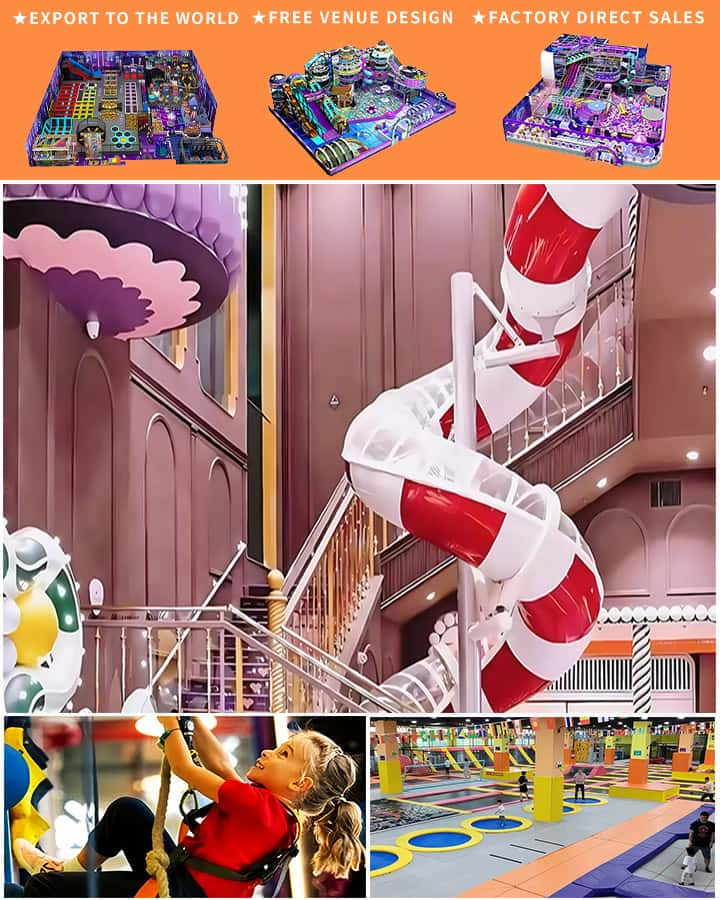Playgrounds have long been a cornerstone of childhood, providing a vibrant tapestry of fun and physical activity. From swings to slides, the variety of equipment available ensures that children can enjoy diverse forms of play. In this article, we will delve into the names of various playground equipment, accompanied by pictures, to give you a comprehensive guide. Understanding these names can help parents, educators, and caregivers ensure a safe and enjoyable experience for the children. Let’s embark on this colorful adventure!
Swings
Swings are among the most iconic pieces of playground equipment. They come in various forms, including traditional single swings, baby swings, and adaptive swings. The gentle back-and-forth motion helps develop balance and coordination.
Picture: A classic metal swing set with two swings side by side.
Slides
Slides offer exhilarating fun as children descend from a height. There are several types of slides like straight slides, spiral slides, and wavy slides. Some even include features like bumpers or tunnels.
Picture: A bright red spiral slide curving down towards a soft landing zone.
Seesaws
Seesaws provide an interactive way for children to engage with each other. These teeter-totters require cooperation and timing, fostering social skills and balance.
Picture: A wooden seesaw with two kids playing, one on each end.

Jungle Gyms
Jungle gyms are versatile structures consisting of ladders, rings, and horizontal bars. They encourage climbing, balancing, and exploring, promoting gross motor skill development.
Picture: A jungle gym made of interconnected metal bars and platforms.
Climbing Walls
Climbing walls are excellent for developing strength, coordination, and problem-solving skills. These vertical structures can be freestanding or integrated into larger play systems.
Picture: A colorful climbing wall with handholds and footrests.
Merry-Go-Rounds
Merry-go-rounds are circular platforms that rotate, allowing multiple children to sit, stand, or hang on as they spin around. It’s a fantastic way to introduce the concept of centrifugal force in a fun manner.
Picture: A merry-go-round with seats shaped like animals.
Sandboxes
Sandboxes offer a tactile and creative play environment where children can build castles, dig for “treasure,” or simply enjoy the sensation of sand between their fingers. They are great for sensory development.
Picture: A large sandbox filled with fine, child-safe sand and surrounded by low barriers.
Spring Riders
Spring riders are bouncy toys powered by springs beneath a seat or platform. They provide a delightful way for children to experience up-and-down motion, which is both fun and physically engaging.
Picture: A spring rider shaped like a horse with a smiling child riding it.
Playhouses
Playhouses mimic real houses and often include elements like doors, windows, and sometimes even pretend kitchens or living rooms. These structures encourage imaginative play and social interaction.
Picture: A quaint, pastel-colored playhouse with a small doorbell and windows.
Balance Beams
Balance beams are narrow, elevated paths that challenge children to walk without losing their balance. They improve stability and concentration while adding an element of adventure.
Picture: A wooden balance beam set over a soft mat for safety.
Conclusion
The world of playground equipment is vast and varied, offering something for every child. By familiarizing ourselves with the names and features of different playground items, we can better appreciate the joy and developmental benefits they bring. Whether it’s the thrill of a slide, the cooperative play of a seesaw, or the imaginative exploration of a playhouse, playgrounds are essential spaces for nurturing young minds and bodies. So next time you visit a playground, take a moment to marvel at the array of equipment designed to bring joy and growth to our little ones.




